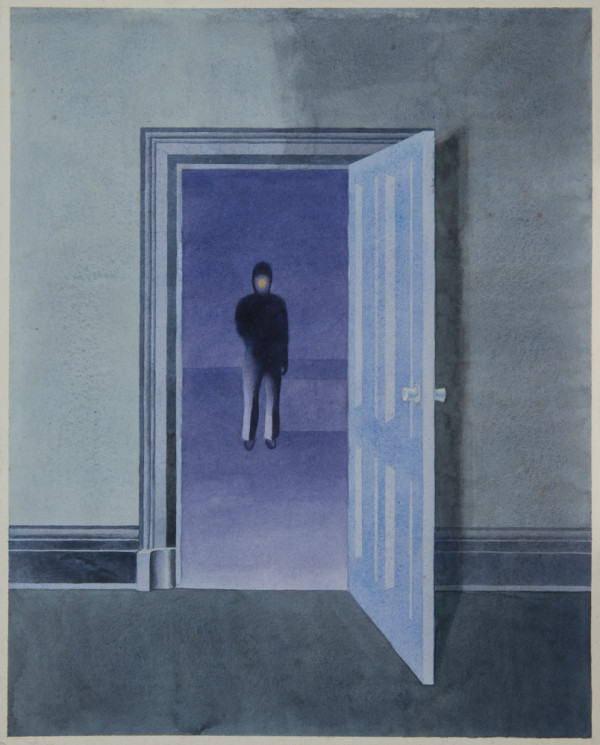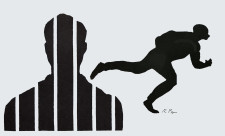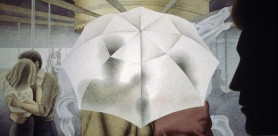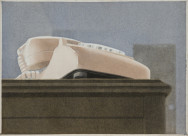While Robert recovered from his chemo treatments, he watched old films on TV, starting with the films of Alfred Hitchcock. He admired how these films were both artistic and entertaining, and challenged himself to use similar story-telling elements in his own paintings. This is the most explicit of Robert’s three Hitchcock-inspired paintings. (The others are Heart Attack and Shifting Weather.) In the film Rear Window, the murderous character played by Raymond Burr is portrayed in a similar way to Robert’s image of a solitary man in a darkened room just visible by the light from his cigarette. The film is famous for its views through windows, creating frames within frames, a motif Robert remarks on in his extensive notes.
The title refers to Marcel Duchamp’s Fresh Widow, 1920 (a reconstruction of a French window with its panes covered in black leather). Duchamp’s surrealist object was created at the end of the first world war as a tribute to the many women whose husbands had died in the war. Duchamp’s paradox of an opaque window is a mysterious meditation on the impossibility of seeing what awaits us after death. Robert explores the theme of isolation. The murderous character has experienced something that sets him apart from others. This separation is as much a moral breach as it is a physical distance. Robert may have identified with this sense of isolation because of his cancer.



